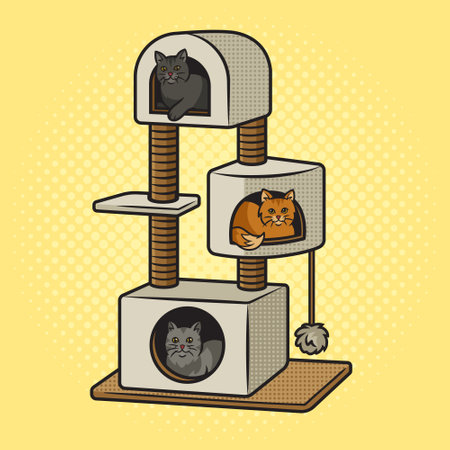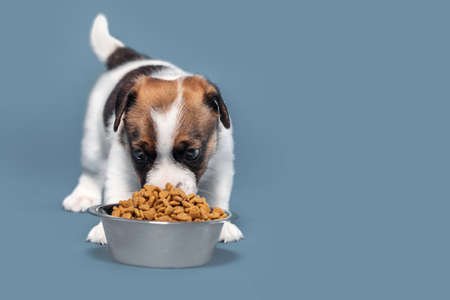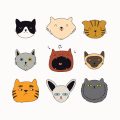Understanding Grain-Free Pet Food
Grain-free pet food has become increasingly popular among American pet owners who want the best for their furry friends. But what exactly does “grain-free” mean? Simply put, grain-free pet food is formulated without common cereal grains like wheat, corn, rice, or barley. Instead, these recipes often use alternative carbohydrate sources such as sweet potatoes, peas, lentils, or chickpeas. This approach sets grain-free foods apart from traditional pet diets, which typically rely on grains as a primary energy source. Many grain-free formulas also focus on higher protein content and may include novel protein options like duck, salmon, or bison. As a result, these foods are designed to mimic the natural ancestral diet of dogs and cats, aiming to provide balanced nutrition through wholesome ingredients. Understanding the basics of grain-free nutrition can help you decide if this trend aligns with your pet’s individual needs and your own values as a pet parent.
2. Potential Health Benefits
When considering whether grain-free pet food is the right choice for your furry friend, it’s important to look at the potential health benefits. Many American pet owners and veterinarians have reported several positive changes in pets that switch to a grain-free diet. Some of the most commonly observed improvements include a reduction in allergies, better digestion, and even shinier, healthier coats.
Allergy Reduction
One of the main reasons pet owners opt for grain-free food is to help manage food allergies or sensitivities. While not all pets are allergic to grains, some can develop skin irritation, excessive scratching, or digestive upset due to certain grains like wheat or corn. By removing these ingredients from their diet, some pets experience noticeable relief from allergy symptoms.
Improved Digestion
Another benefit frequently cited by both vets and pet parents is improved digestion. Grain-free formulas often use alternative sources of carbohydrates such as sweet potatoes or peas, which may be easier on some pets stomachs. This can lead to firmer stools and less gas, which is especially helpful for dogs and cats with sensitive digestive systems.
Shinier Coats and Better Skin
A healthy coat is often a sign of good nutrition. Some owners report that after switching to grain-free diets, their pets’ fur becomes shinier and their skin healthier. This could be due to higher levels of animal protein and healthy fats found in many grain-free recipes.
Comparison Table: Reported Benefits of Grain-Free Pet Food
| Potential Benefit | Description | Reported By |
|---|---|---|
| Allergy Reduction | Fewer skin issues and less itching due to removal of common allergens | Pet Owners & Veterinarians |
| Improved Digestion | Better stool quality and reduced gastrointestinal problems | Veterinarians |
| Shinier Coat | Softer, glossier fur linked to higher-quality proteins and fats | Pet Owners |
Caution: Individual Results May Vary
It’s important to remember that every pet is unique. Not all animals will respond the same way to a grain-free diet, so consult with your veterinarian before making major changes. While some pets thrive on grain-free foods, others may not see the same benefits or may need different dietary adjustments.

3. Common Myths and Misconceptions
When it comes to grain-free pet food, there’s no shortage of myths and misunderstandings floating around. One of the most common beliefs is that grain-free automatically means “low-carb” or “healthier.” In reality, many grain-free formulas replace grains with alternative sources of carbohydrates like potatoes, peas, or lentils—sometimes resulting in a similar or even higher carbohydrate content than traditional pet foods. It’s important to read labels carefully and not assume “grain-free” equates to “carb-free.” Another misconception is that grains are inherently bad for all pets. For most healthy dogs and cats, whole grains such as brown rice or oatmeal can actually be a good source of energy and nutrients. True grain allergies are relatively rare; however, some pets may have sensitivities that make a grain-free diet more suitable for them. There’s also been concern over potential health risks linked to grain-free diets, especially after the FDA began investigating possible connections between certain grain-free recipes and heart conditions like DCM (dilated cardiomyopathy) in dogs. While research is ongoing, it’s crucial for pet owners to consult with their veterinarian before making any major dietary changes. Ultimately, choosing the right diet depends on your pet’s individual needs rather than popular trends or marketing claims.
4. The Grain-Free Controversy
The conversation around grain-free pet food took a sharp turn in recent years, especially after the U.S. Food and Drug Administration (FDA) issued advisories regarding its potential link to canine dilated cardiomyopathy (DCM), a serious heart condition. Many pet owners and veterinarians were surprised when the FDA began investigating reports of DCM in dogs eating grain-free diets, particularly those with high levels of legumes like peas or lentils as main ingredients.
Veterinary concerns have since grown, with some professionals urging caution before making the switch to grain-free formulas. The core of the controversy centers on whether certain ingredients used to replace grains could be contributing to nutritional imbalances or deficiencies that affect heart health.
Recent studies have produced mixed findings. Some research suggests a correlation between grain-free diets and an increased risk of DCM in specific breeds, while other studies find no direct cause-and-effect relationship. This has led to ongoing debate among scientists, veterinarians, and pet owners alike.
Key Points from Recent FDA Advisories and Research
| Topic | Summary |
|---|---|
| FDA Advisory (2018-2022) | Warned about a possible link between grain-free diets and DCM; ongoing investigation without definitive conclusions. |
| Veterinary Feedback | Many vets recommend choosing diets backed by long-term feeding trials and consulting with board-certified veterinary nutritionists. |
| Current Research | No single ingredient or recipe has been proven solely responsible for DCM; more studies are underway to clarify the risks. |
The current stance is one of caution: while not all pets on grain-free diets develop heart issues, it’s important for pet parents to stay informed, monitor their pets’ health closely, and discuss any dietary changes with a trusted veterinarian. The scientific community continues to study this issue, so recommendations may evolve as new evidence emerges.
5. Is Grain-Free Right for Your Pet?
Deciding if a grain-free diet is the best choice for your pet requires a thoughtful look at their unique needs. Not every pet will benefit from going grain-free, so it’s important to weigh several factors before making a switch. First, consider your pet’s breed and size—some breeds may be more prone to food sensitivities or allergies, while others digest grains just fine. Age also plays a role; puppies and kittens, adults, and seniors each have different nutritional requirements. For example, a growing puppy might need a more balanced blend of nutrients than a mature dog with a sedentary lifestyle.
Your pet’s health history is another crucial piece of the puzzle. If your veterinarian has diagnosed allergies or digestive issues related to grains, a grain-free formula could help relieve symptoms. On the other hand, pets without these sensitivities may not need to avoid grains and can benefit from their nutritional value. Always review your pets medical background and any previous reactions to foods before making dietary changes.
Lifestyle matters too. Active dogs that burn lots of energy might thrive on different carbohydrate sources found in grain-inclusive diets, while less active or overweight pets may do better with lower-carb, grain-free options. Observe how your pet reacts to their current food: Are they energetic? Is their coat shiny? Are there signs of itching or gastrointestinal upset? These practical observations can guide your decision.
Ultimately, consult with your veterinarian before changing your pet’s diet. They can recommend appropriate tests or offer professional insight into whether grain-free food aligns with your pets overall health goals. Remember, what works for one animal might not work for another—personalized care is key when it comes to nutrition.
6. Transitioning to a Grain-Free Diet
Switching your pet to a grain-free diet can offer many benefits, but it’s important to make the transition gradually and thoughtfully. Abrupt changes in your dog or cat’s food can upset their digestive system, leading to issues like vomiting, diarrhea, or refusal to eat. Here are some practical tips and key signs to watch for as you introduce grain-free food into your pet’s routine.
Tips for a Smooth Transition
Start Slowly
Begin by mixing a small amount of the new grain-free food with your pet’s current food—about 25% new and 75% old. Over the next week, gradually increase the proportion of grain-free food while decreasing their regular food. This allows your pet’s digestive system time to adjust and reduces the risk of stomach upset.
Watch for Sensitivities
Keep an eye on your pet for any adverse reactions during the switch. Common signs include loose stools, vomiting, excessive scratching, or changes in energy levels. If you notice these symptoms, slow down the transition process or consult your veterinarian for advice specific to your pet’s needs.
Maintain Consistency in Feeding Times
Stick to a consistent feeding schedule throughout the transition. Pets thrive on routine, and keeping their mealtimes steady helps reduce stress and encourages them to try the new food without anxiety.
What Changes to Expect
Positive Signs
If the grain-free diet is suiting your pet, you may notice shinier coats, more consistent energy levels, healthier stools, and even improved breath. Many owners report that their pets seem more satisfied after meals due to increased protein content in grain-free formulas.
When to Seek Help
If your pet refuses to eat altogether or shows ongoing signs of digestive distress, don’t hesitate to reach out to your vet. Every animal is unique, and while many thrive on grain-free diets, others might need a different approach tailored to their individual health conditions.
Remember: transitioning to a grain-free diet is not just about swapping foods—it’s about supporting your pet’s health in a way that fits their unique needs. Take it slow, observe carefully, and you’ll set your furry friend up for success.
7. Consulting Your Veterinarian
When it comes to choosing the best diet for your pet, especially when considering grain-free options, there’s no substitute for professional advice. Every pet is unique, and factors like age, breed, activity level, and existing health conditions play a huge role in determining what type of food will help them thrive. Your veterinarian knows your pet’s medical history and can provide tailored recommendations that you simply won’t find on a food label or online forum. While some pets may benefit from a grain-free diet due to allergies or sensitivities, others might need the nutrients found in grains for balanced nutrition. That’s why partnering with your vet is so important—they can help you navigate pet food marketing claims and guide you toward evidence-based decisions. Before making any big changes to your pet’s diet, schedule a check-up and have an open conversation about your concerns and goals. Together, you can create a nutrition plan that supports your pet’s long-term health and happiness. Ultimately, working closely with your veterinarian ensures that every decision you make is grounded in science and compassion—two things every beloved family member deserves.


